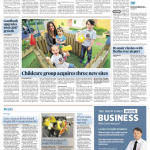This week Ireland witnessed its first major mass Twitter outburst at a company as Eircom’s internet services were compromised by a hacker for the second time in under a week.
Thousands of Eircom customers took to Twitter and Boards.ie to gripe openly on their broadband services continued vulnerability to these attacks. Eircom made no attempt to engage with their customers in these spaces and simply posted a paragraph in their support section telling customers what they already knew – the internet is broken. When the story of the second outage was covered by The Irish Times’ Ciara O’Brien the piece focused at Eircom’s online engagement slip up more than its connectivity failings.
In an age where customers expect timely, precise and truthful information, Eircom missed an opportunity to directly engage with their customers in these spaces and explain the situation. As with all crisis communications, by not having an existing communications infrastructure to engage in this way, Eircom lost control of the message and scathing online public outpourings multiplied across the internet.
Issues with products and services do happen but ignoring your public in an era where everybody can be a journalist of sorts is dangerous and futile. Media relations are essential because the media efficiently informs the population. Social media relations are now equally essential as more and more of the population gets their information online.
Our client, Magnet Networks, was advised and trained by us in using Twitter and Boards.ie and presently has its own discussion forum on boards.ie. By using these services they have been able to open a direct channel with both potential and existing customers and earned their respect and trust by dealing with them in their space, in their time in an open and informative manner.
In the coverage of the online outpourings against Eircom, Magnet has been lauded by bloggers as an example of how a telco should engage online. Fred at Channelship covered the incident in his video blog and the Magnet’s Twitter followers increased sizeably.
In the current economic climate PR firms will have to focus their efforts to get clients’ messages into the places where they need to be seen by their customers and stakeholders. While print and broadcast media will continue to be a core part of the communications mix, any company that ignores the very visible online spaces their customers communicate through does so at their peril.





